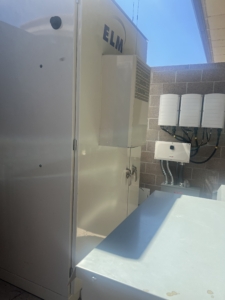United Way CEO appointed to SOU Board of Trustees
(Ashland, Ore.) — Dee Anne Everson, the CEO and executive director of United Way of Jackson County, has been appointed by Gov. Tina Kotek and confirmed today by the Oregon Senate to serve on the university’s Board of Trustees. She will begin her service to the board on November 20.
Everson will complete the unexpired term of Bill Thorndike, who passed away unexpectedly in February. That term will expire next June 30, and Everson will then begin her own full, four-year term on the board.
“It is an honor to join Southern Oregon University’s Board of Trustees, and especially humbling to be following in the footsteps of Bill Thorndike,” Everson said. “I believe that my experiences will be of value to the board, and I look forward to helping guide the university through an important period in its long and rich history.”
Everson has served as the CEO and executive director of United Way of Jackson County since 1996. Under her leadership, the local United Way has launched programs including Day of Caring, WILL (Women Living Leadership), the Meth Task Force, CAN (Child Abuse Network) and Tomorrow Needs You – a southern Oregon suicide prevention and mental wellness campaign. She previously spent 13 years in the corporate financial sector, then transitioned to nonprofits as economist and research manager for the Greater Seattle Chamber of Commerce.
Recognitions since she joined United Way of Jackson County include being named one of Oregon’s 50 great leaders by Oregon Business Magazine, the Social Empowerment Award from the Black Alliance for Social Empowerment (BASE), and the Nonprofit Outstanding Corporate Citizen Award from the Medford/Jackson County Chamber of Commerce.
Everson – who received the Executive Nonprofit Leaders Certificate from Stanford University – is a member of the International Women’s Forum and serves on the boards of the Oregon Community Foundation, Oregon Shakespeare Festival, NewSpirit Village and the United Ways of the Pacific Northwest. She also serves on several committees, including the Jackson County Threat Assessment Committee, Wellness Court Advisory Committee and BHEACON Leadership Team. She is a convener for the Governor’s Regional Solutions Committee for Southern Oregon.
Everson has won two EMMY Awards for public service programming and regularly lectures on leadership and the nonprofit sector.
“On behalf of my colleagues on the SOU Board of Trustees, I am very happy to welcome Dee Anne to the board and to the SOU community,” said Sheila Clough, the board chair. “Her expertise and public service portfolio speak volumes – her leadership and wealth of experiences will undoubtedly serve the university well.”
-SOU-










 The projects were installed by Ashland-based contractor True South Solar as part of SOU’s first round of funding from the
The projects were installed by Ashland-based contractor True South Solar as part of SOU’s first round of funding from the 